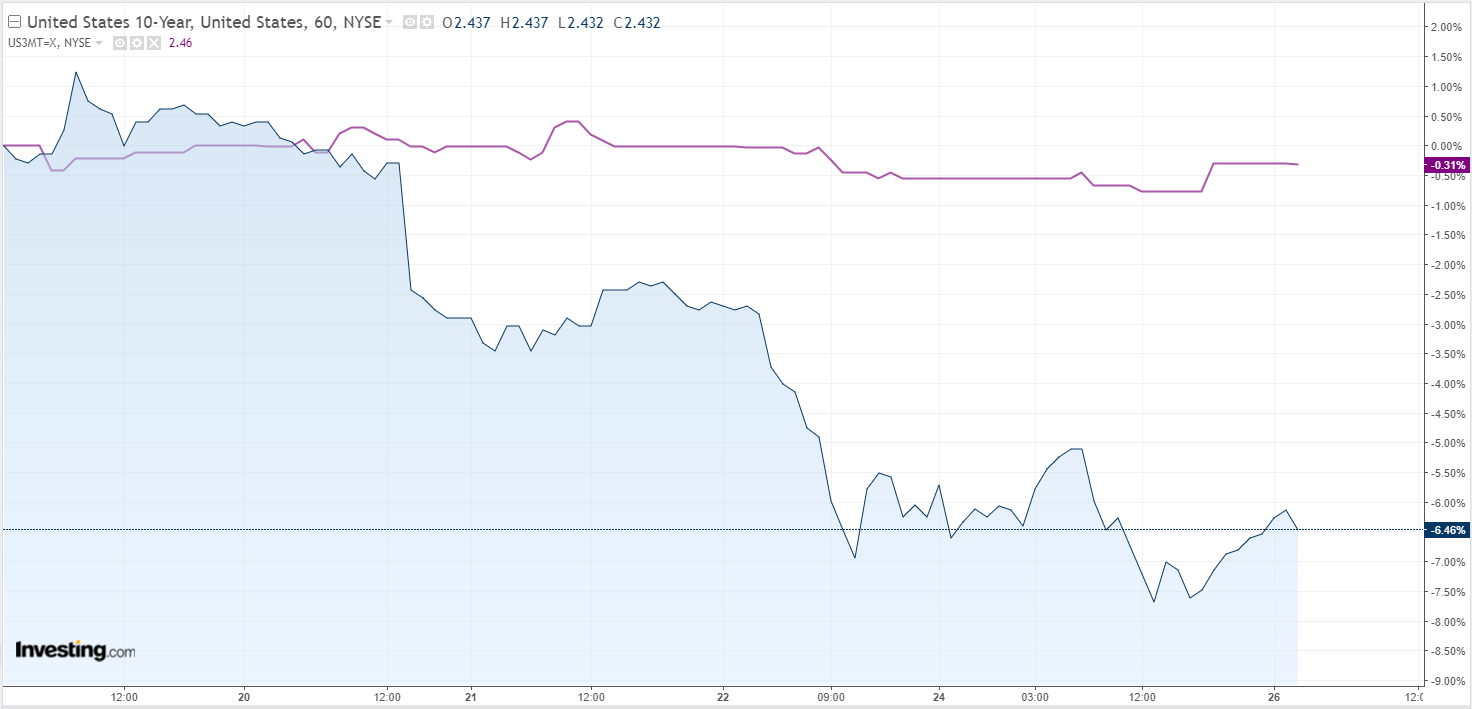Investors remained on edge Monday but the whiff of panic that spurred Friday’s equity plunge was gone. Stocks closed mixed even as the inversion on the yield curve between 3-month and 10-year Treasuries widened to 5 basis points.

It was that inversion on Friday, the first between these two points on the yield curve since 2007, which triggered the selloff. Inversion occurs when short-term rates go higher than long-term rates and this particular inversion is considered the most reliable indicator that recession is coming.
Reliable, that is, if you consider waiting a year or two for the recession to hit as a meaningful indicator. It often takes at least that long and there have been a couple of false positives along the way, too—brief inversions that are not followed anytime soon by a recession.
Moreover, there is a school of thought that posits extraordinary stimulus efforts by the Federal Reserve and other central banks in buying trillions of dollars in bonds have flattened the yield curve, making it more prone to temporary inversion or a choppy path back and forth. This was former Fed chair Janet Yellen’s take when asked about it Monday in Hong Kong.
She suggested the market may be hinting at a rate cut rather than heralding a recession. Futures markets are already saying a rate cut by the end of this year is growing likelier, while no one expects a hike for months. At that Hong Kong conference, Chicago Fed chief Charles Evans said Monday he thought it would be the second half of 2020 before policymakers would consider raising rates again.
Like Fed chair Jay Powell last week, Evans remains confident about the economy even though the Fed has reduced its growth forecast for this year to 2.1 percent. Evans is slightly less optimistic with an expectation of 1.75 percent to 2 percent.
Sovereign bond yields are plunging worldwide as investors worry about growth. Germany’s 10-year bond yield slipped into negative territory for the first time since 2016 on Friday, ahead of the drop in the 10-year Treasuries. That yield also declined further on Monday.
Europe’s biggest economy arguably faces stiffer headwinds than the U.S., and the PMI survey released Friday showed manufacturing there contracting in March for the third month. But on Monday, the closely watched Ifo Index of business confidence unexpectedly rose to 99.6 in March from a revised 98.7 in February, which had been the sixth decline in a row.
The nervousness about bond yields largely overshadowed what should have been bullish news for the U.S. economy as the attorney general reported the investigation by Special Counsel Robert Mueller found no evidence of collusion between Russia and the Trump campaign in 2016. The report will not end the controversy but it is certainly a major victory for the president and the administration. At best, the news may have halted further declines in stocks.
Meanwhile, Brexit is taking its torturous path to an outcome still impossible to predict. It is one of the imponderables keeping investors nervous and susceptible to triggers like the inverted yield curve on Friday.
The hope is that the yield curve will right itself in the coming days. Most analysts believe the inversion must last a considerable amount of time, even a quarter, for it to truly be forecasting a recession. Many consider Friday’s selloff in equities to be an overreaction since there should still be plenty of opportunities for investors in the months before recession sets in, even if that eventually turns out to really be the signal.
